|
San Diego Sites Speak: Stories of the 1918 Pandemic
By Lu Rehling
May/June 2020
Only super-centenarians could share memories of the events of 1918's viral pandemic, which struck about seven percent of San Diego's population and killed approximately seven percent of those infected, before ending in early 1919. However, several still-existing local sites can tell stories of that time—interesting, in part, for their current parallels.
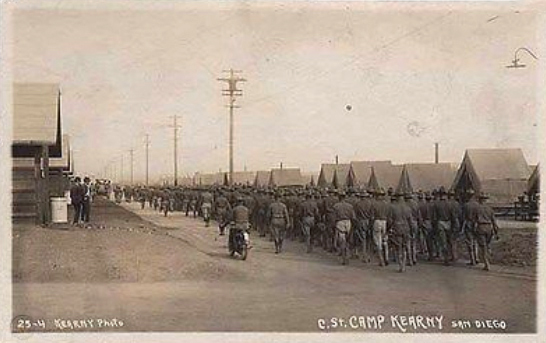 Camp Kearny Camp Kearny
Before Spain reported any cases of the misnamed Spanish flu, it was spreading through military sites in the U.S., including Camp Kearny. Leaders of that army base (now the Marine Corps Air Station Miramar) first resisted quarantining its soldiers, then did, only to relax the quarantine too soon, followed by a local spike in infections, which led to new restrictions. Photo courtesy www.worthpoint.com
|
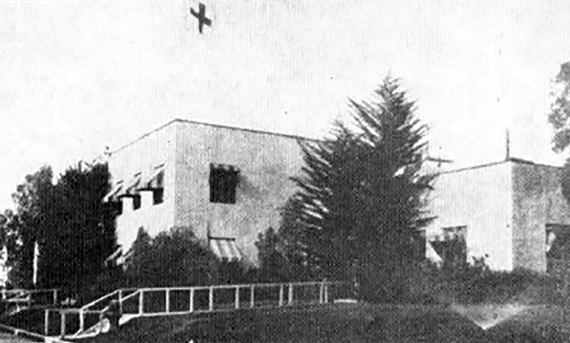 War Dispensary War Dispensary
Another military site, the Naval Training Camp at Balboa Park, reported the first cases in San Diego. Its dispensary for tent camp sailors (located where the Pepper Grove playground is today) came to include an isolation ward reserved for flu patients. The dispensary evolved into a naval hospital, soon replaced by the permanent "pink palace" built across Park Boulevard (which now houses the city Parks and Recreation Department) and additional hospital buildings. All were abandoned for medical use in the 1980s (after construction of the current Naval Medical Center), partly because, at that time, their wards separating infectious-disease patients were considered antiquated. Photo courtesy U.S. Navy Bureau of Medicine and Surgery, Historian
|
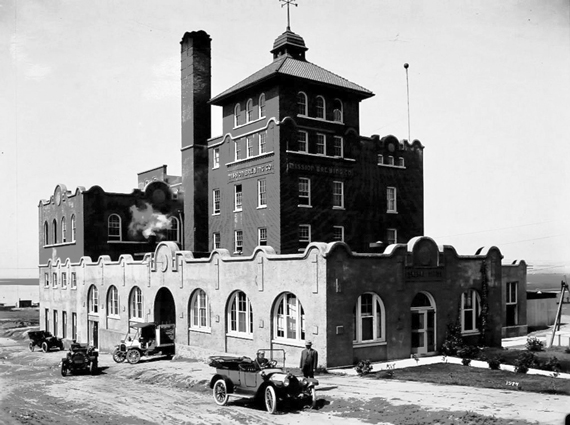 Mission Brewery Mission Brewery
An emergency isolation hospital, according to its renowned physician Peter Remondino, saved all of its flu patients in a building temporarily converted from a brewery (and operating today as Latchkey Brewery). Remondino came out of retirement to assist in combating the pandemic. Previously, in 1885, he built the original St. James Hotel in the Gaslamp Quarter, where now stands the Maryland Hotel, a locally designated historic site, as is Old Mission Brewery Plaza. Photo courtesy San Diego History Center
|
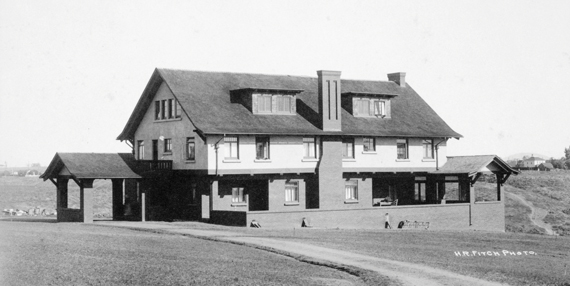 Marston House & Department Store Marston House & Department Store
Along with Remondino and the Board of Health, George W. Marston, whose now historic home in Balboa Park was the frequent site of civic meetings, joined the then mayor (who had defeated Marston in a recent election) in attempting to persuade the City Council to mandate business quarantines and masks. Eventually implemented over economic objections, those requirements may have helped protect San Diego from the much worse infection rates experienced elsewhere. Marston advocated for the public good, despite the resulting temporary closure of his own downtown department store. Visitors can view artifacts of Marston's elegant store throughout the SOHO-operated Marston House Museum. The Marston House, 1905. Photo courtesy SOHO collection
|
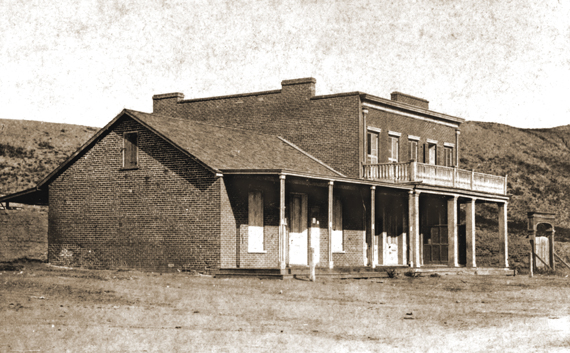 Whaley House & Fremont School Whaley House & Fremont School
Another SOHO-managed historic site, the Whaley House, directly experienced the pandemic when adult daughter Lillian Whaley apparently contracted the disease. Her physician could not be sure because no testing was possible at the time. Whaley later wrote, "I believe I did not have a very hard case. She chose private self-quarantine over removal to a makeshift emergency isolation hospital, such as nearby Fremont School, which had been ordered closed to students. Just a few blocks away from the previous Old Town school that Whaley's father, Thomas, had founded decades earlier, the flu-repurposed school building later was replaced by another, which still displays the original Fremont name, though the San Diego Unified School District now operates it as the Ballard Family Center. The Whaley House, c. 1870s. Photo courtesy SOHO collection
|
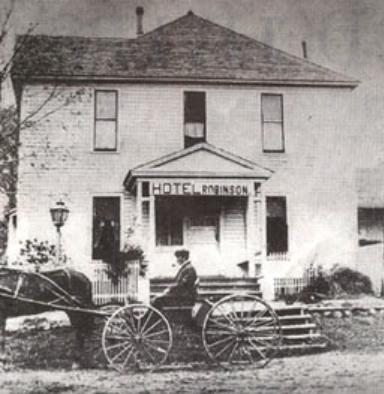 The Robinson Hotel & Horton Plaza The Robinson Hotel & Horton Plaza
Others making their own decisions about how to respond to the pandemic were advised by a prominent local physician that the flu could not survive at high altitudes, such as in the Cuyamaca and Laguna Mountains. Local lodgings there included the Robinson Hotel, owned by San Diego native and African American Margaret Tull Robinson, widow of Albert Robinson, who had been born enslaved. Hers was one of the first black-owned businesses in San Diego County. It continues as the oldest operating hotel in Southern California (now the Julian Gold Rush Hotel) and is listed on the National Register of Historic Places. Although many who visited at that time may have been misled by an unproven medical claim, at least they could enjoy the Robinsons' celebrated "Maggie's Sunday chicken dinner." For those stuck in San Diego, the "Aunty Flu" offered hope in the form of a bitter-tasting quinine-based elixir, sold from a booth on what is now the designated historic Horton Plaza Park. Photo courtesy www.findagrave.com
|
Thanks to Robin Lakin, historian, and staff and volunteer coordinator for the Whaley House, for sharing information from the Lillian Whaley papers.
|
2025
2024
2023
2022
2021
2020
2019
2018
2017
2016
2015
|









